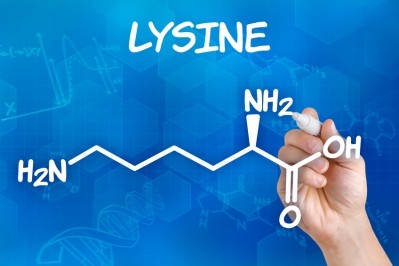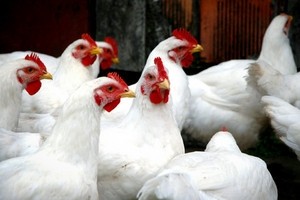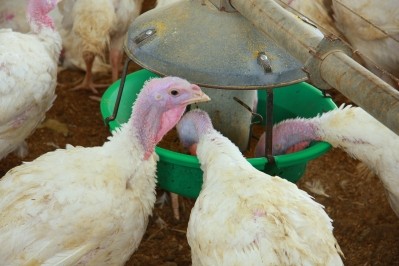Amino acids taking greatest revenue share of feed additives market

The latest feed market publication from US company, Allied Market Research, shows that the feed supplement sector was worth $14.9 billion in 2013.
The researchers say that as demand for meat is on the rise, especially in countries like China and India, the meat industry is under pressure to grow supply faster, and is turning to feed additives like lysine to support animal nutrition, health and development.
The feed additives side of the livestock feed industry is predicted to have a compound annual growth rate (CAGR) of 4.2 percent over the next six years.
Lysine, with production capacity of around 2.39 million tons in 2013 worldwide, accounted for about 70 percent of amino acid usage in livestock last year, outperforming by far the use of other amino acids - tryptophan, methionine and threonine - in pigs and poultry.
Lysine supply consolidation
Demand for lysine is expected to intensify in the next few years due to the advantages it offers on alternatives such as soybean.
But alliances are likely in a bid to reduce the number of suppliers in the market, says Sarah Clark, an analyst with Allied Market Research.
“Higher quantities of lysine are boosting feed efficiency, which makes the amino acid a very lucrative additive for companies and investors.
But larger groups will cautiously continue to control the cost by adjusting the volume and efficiency of production,” she told FeedNavigator.com.
Lysine and the other amino acids are essential for feed conversion and growth promotion, particularly in poultry and swine.
Elimination of weaker competitors
Last month, Chinese producer, Global Biochem Technology (GBT), scaled back its production of the amino acid.
The company is one the biggest lysine manufacturers globally with an annual fermentation capacity of around 500,000 metric tons (MT).
It has suspended production of lysine products at one facility until December 2014 as it awaits a renewal of demand.
GBT, which said it “will further solidify its leading position when the market picks up,” also forecasts a tightening of the lysine supply market.
“It is expected that the [lysine] market will gradually improve with the elimination of weaker competitors in the industry,” said the amino acid manufacturer last month.
Ajinomoto and Evonik are two of the leading lysine manufacturers and they operate in the European, North American and Asian markets.
VitaLys is also a major lysine player on the European market, while ADM and Cheil Jedang have a great share of the North American lysine arena.
Some of the other major lysine companies on the Asian market include the Changchun Dacheng group, Cheil Jedang, COFCO Biochemical Co, GBT, Shandong Shouguang Juneng Golden Corn Co and Vedan.
Antibiotic ranks second in revenue terms
Though antibiotics as growth promoters have been banned in the EU and are set to be phased out in the US by 2017, they will constitute the second largest revenue generating segment up until 2020, followed by feed acidifiers and vitamins, says the report.
Antioxidants and feed enzymes are also expected to have notable growth during the forecast period.
The poultry meat sector will continue to see the greatest take-up of feed additives over the next six years.
Clark said one of the reasons for growth in poultry, apart from a hike in demand due to the rise in living standards in developing markets, is that the meat “is not associated with any type of religious taboos.”
Feed additives commonly used for poultry are enzymes, acidifiers, antibiotics and antioxidants.
Clark predicts a CAGR for feed additive growth in Asia Pacific of 4.3 per cent over the next six years as livestock producers there migrate away from a reliance on ‘home backyard’ type feeds that do not meet the necessary nutritional requirements for livestock weight gain and disease prevention.
The CAGR predicted for the European market is 4.4 per cent up until 2020, while it is expected to be around 4.1 percent for the North American market.













